10 states where college enrollment has dropped the most over the past decade

Canva
10 states where college enrollment has dropped the most over the past decade
An empty college classroom.
A college degree used to be considered the golden ticket to starting a good life. Over the past several years, something’s changed.
According to a 2023 Wall Street Journal poll, 56% of Americans worry a four-year degree is not worth the cost. Despite the fact that college graduates earn between about $630,000 to $900,000 more over their lifetimes than people without degrees, fewer high school graduates are enrolling in college right away, according to a 2023 report from the National Center for Education Statistics. The Hechinger Report warns that this trend could lead to labor shortages, a weaker economy, growing racial inequities, and even a lower life expectancy.
All told, 44 states saw a decline in college enrollment between 2010 and 2019. And while that number is startling, it doesn’t necessarily spell doom for the system as a whole. As it turns out, the trend is fairly recent. When you look back to the start of the millennium, only three states—Alaska, Michigan, and Illinois—have seen consistent enrollment drops. And while total U.S. enrollment is down 6.6% between 2010 and 2019, federal statistics show it’s actually up 128.8% compared to 1970, and only down 3.3% between 2019 and 2020. So there’s no need for an all-out panic just yet.
Nevertheless, the nation is starting to pay more attention to shrinking college enrollments. To that end, EDsmart cited data from the National Center for Education Statistics to identify the 10 states that have seen the greatest decline in undergraduate enrollment from the 2010-11 academic year to 2019-20. Although state-level data was available for the more recent 2020-21 school year, 2019 data was used to focus on longer-term enrollment trends separate from the effects of the COVID-19 pandemic.
Read on to see whether or not your home state made the list, and find out what each state is doing to address its falling numbers.
![]()
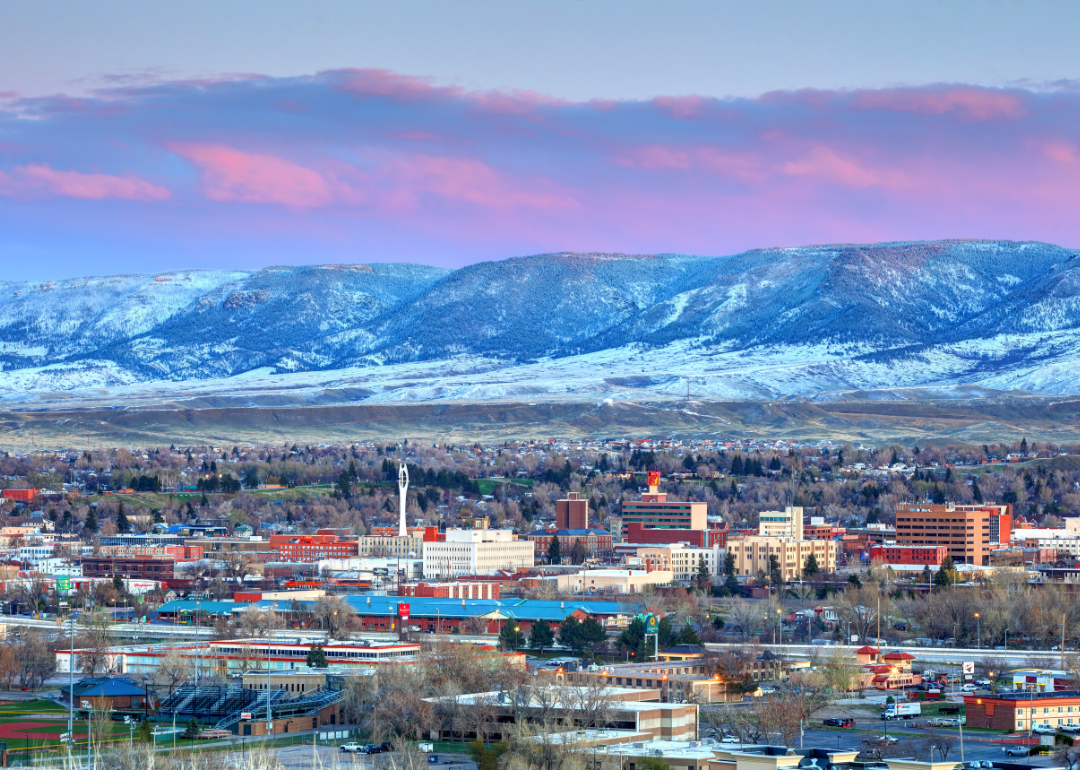
Canva
#10. Wyoming
An aerial view of Casper, Wyoming.
– Enrollment change, 2010-2019: -15.5% (5,925 fewer students)
– Enrollment change, 1970-2019: +112.7% (17,153 more students)
– Impact of pandemic, enrollment change 2019-2020: -4.4% (1,430 fewer students)
With relatively few four-year schools, Wyoming has never really relied on its higher education institutions to bolster its economy the way other states have. Still, the drop in enrollment at the University of Wyoming has hurt both Laramie and the local community. According to the Casper Star-Tribune, overall enrollment at the university is expected to be down 5% compared to 2022, with the biggest decrease in incoming freshman enrollment, which is down by 15% compared to the year prior.
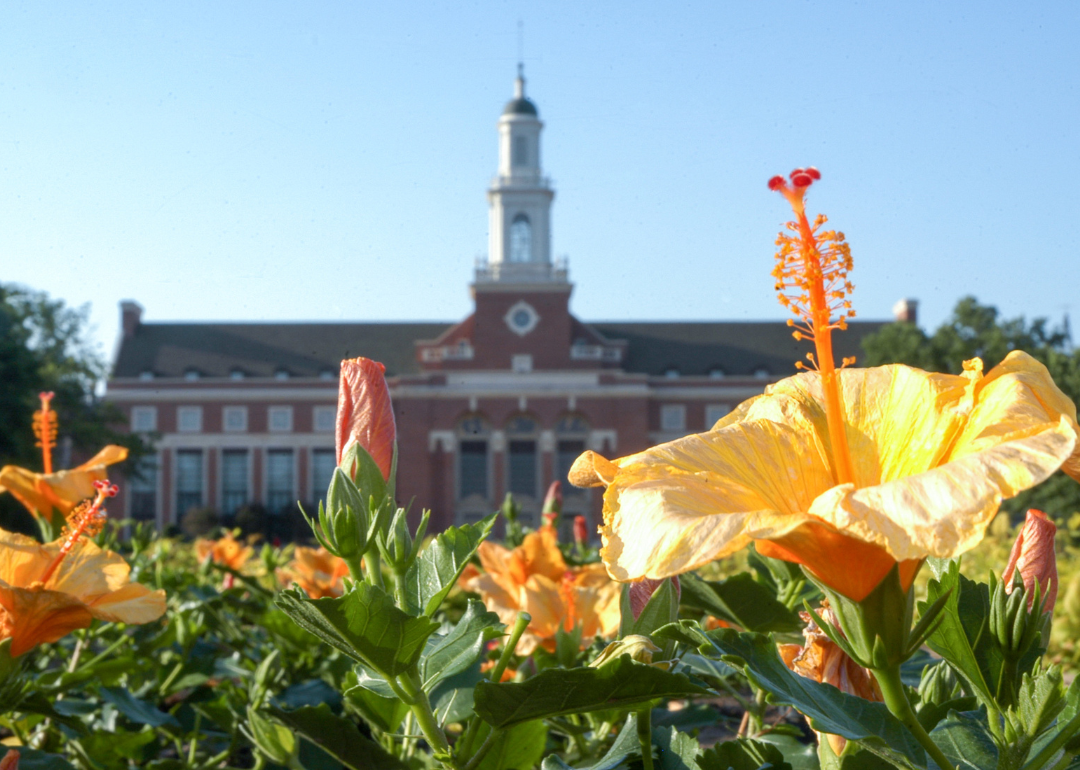
Canva
#9. Oklahoma
Orange Hibiscus flowers in front of Oklahoma State University.
– Enrollment change, 2010-2019: -16.4% (37,912 fewer students)
– Enrollment change, 1970-2019: +74.9% (82,493 more students)
– Impact of pandemic, enrollment change 2019-2020: -1.8% (3,434 fewer students)
At the beginning of 2023, Oklahoma Gov. Kevin Sitt issued a challenge to the University of Oklahoma and Oklahoma State University: reach 40,000 enrollments apiece by 2030. The request won’t be an easy one to fulfill, as enrollments have been in a stiff decline statewide. Still, the schools told the Tulsa World they have a plan to attract new students that includes increasing scholarship funds to let more students graduate debt-free and investing in degree programs in areas that are primed for the most growth, such as nursing and aerospace technology.
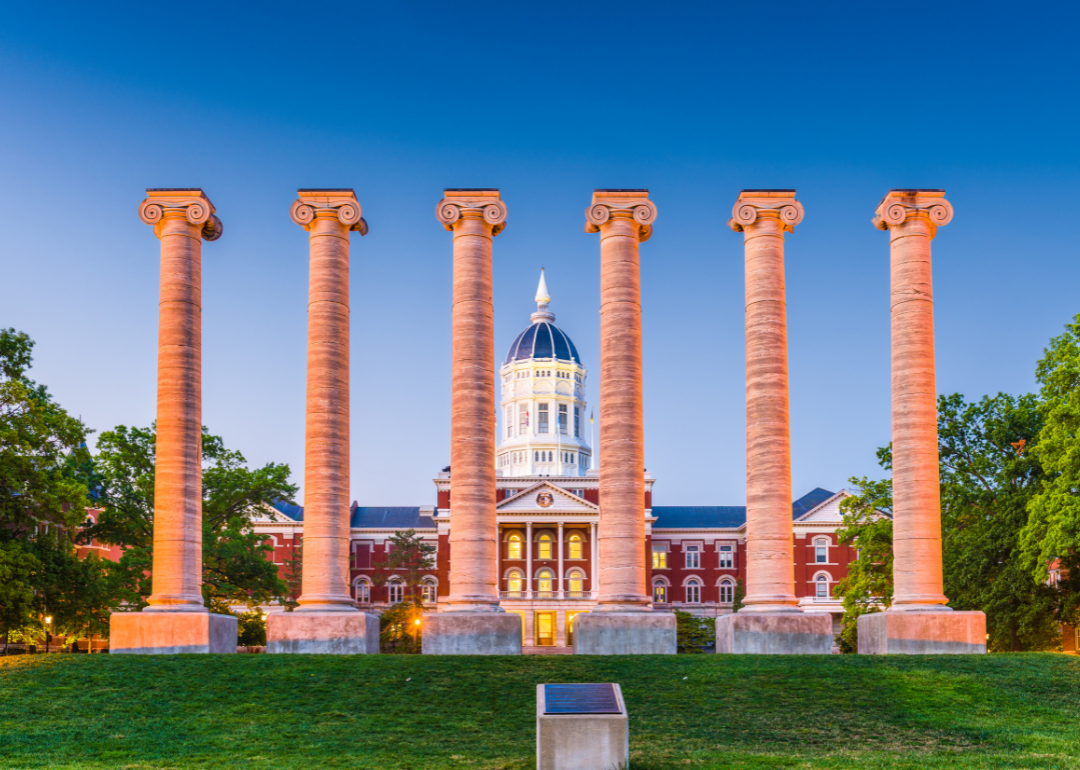
Canva
#8. Missouri
Large columns in front of the University of Missouri.
– Enrollment change, 2010-2019: -18.4% (82,037 fewer students)
– Enrollment change, 1970-2019: +97.2% (178,783 more students)
– Impact of pandemic, enrollment change 2019-2020: -5.5% (20,095 fewer students)
While some states are seeing their larger colleges and universities being hit the hardest by declining enrollment, it’s the smaller schools that have seen the biggest drop in Missouri. For example, Lincoln University lost almost one-third of its enrollments from 2016 to 2021 while larger institutions like the University of Missouri-Columbia have only seen a single-digit percentage loss. Meanwhile, community colleges are reporting a growing number of enrollments, thanks in large part to their more affordable cost per credit and smaller class sizes.
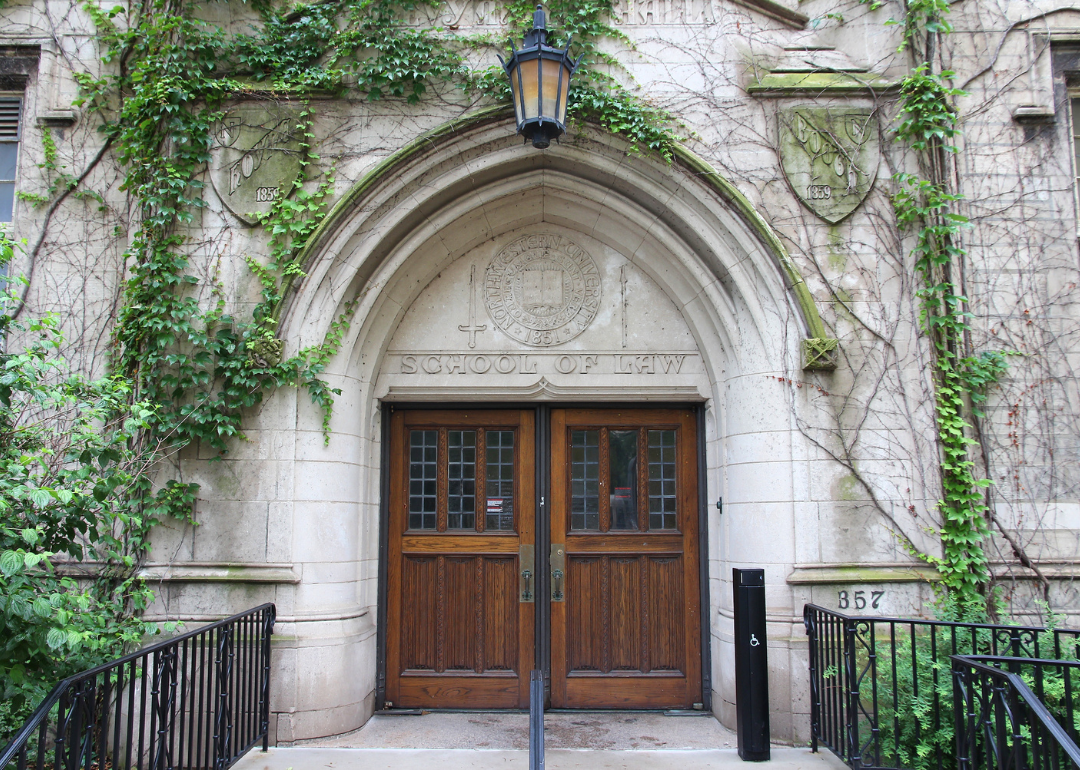
Canva
#7. Illinois
The School of Law entrance at Northwestern.
– Enrollment change, 2010-2019: -20.8% (188,340 fewer students)
– Enrollment change, 1970-2019: +58.9% (266,359 more students)
– Impact of pandemic, enrollment change 2019-2020: -5.1% (36,517 fewer students)
In Illinois, the strategy for reversing the enrollment trends at schools like Northeastern Illinois University is fairly straightforward: Make higher education more accessible to students of color and transfer students with measures such as an increase in funding for need-based scholarships and support programs.
With the third-largest community college system in the country, institutions like Illinois State and the University of Illinois should, theoretically, be in a perfect position to fill their lecture halls with associate degree holders looking to obtain a bachelor’s degree. However, a dramatic rise in tuition costs has made that path inaccessible for thousands of would-be students, leaving college and university leaders certain that the only way to turn around numbers is by lowering out-of-pocket costs.

Canva
#6. Hawaii
Beautiful green trees in front of Hawaii University.
– Enrollment change, 2010-2019: -22.6% (17,636 fewer students)
– Enrollment change, 1970-2019: +65.3% (23,875 more students)
– Impact of pandemic, enrollment change 2019-2020: -1.2% (744 fewer students)
Hawaii has a higher college enrollment rate for public school graduates than nearly any other state, hovering at just around 50%. However, pandemic-related difficulties have meant fewer students have had the means or support to begin their higher education journeys. In response, officials at the University of Hawaii have partnered with the state’s board of education to increase scholarship funding and run customized advising programs—like Next Steps to Your Future—that have made the transition easier. While overall enrollment remains down, there are signs these steps are working, including record on-time graduation rates.
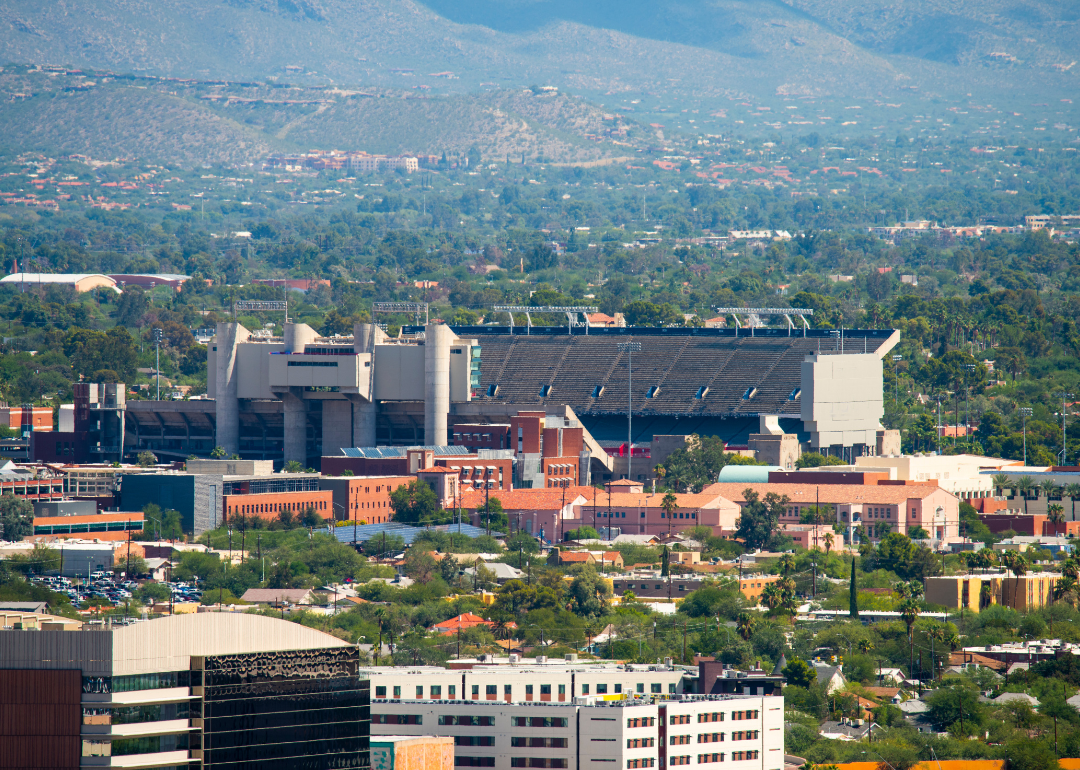
Canva
#5. Arizona
An aerial view of Tuscon with the Arizona University stadium in the background.
– Enrollment change, 2010-2019: -23.3% (184,727 fewer students)
– Enrollment change, 1970-2019: +455.7% (499,525 more students)
– Impact of pandemic, enrollment change 2019-2020: -1.5% (9,041 fewer students)
Arizona, like several of the other states on the list, is having a hard time recruiting in-state students to its two major schools, Arizona State and the University of Arizona. The universities have seen consistent shrinkage in this particular demographic over the last decade, leading to the development of programs intended to help Arizona high school juniors and seniors more seamlessly make the transition.
These programs, though expensive, are crucial as the schools are a “primary economic engine” of the state, one expert told Higher Ed Dive. A Helios Education Foundation report found that a 20% enrollment increase would generate a whopping $5 billion in benefits to society per graduating class, including “lifetime earnings, better health, and increased workforce productivity.”
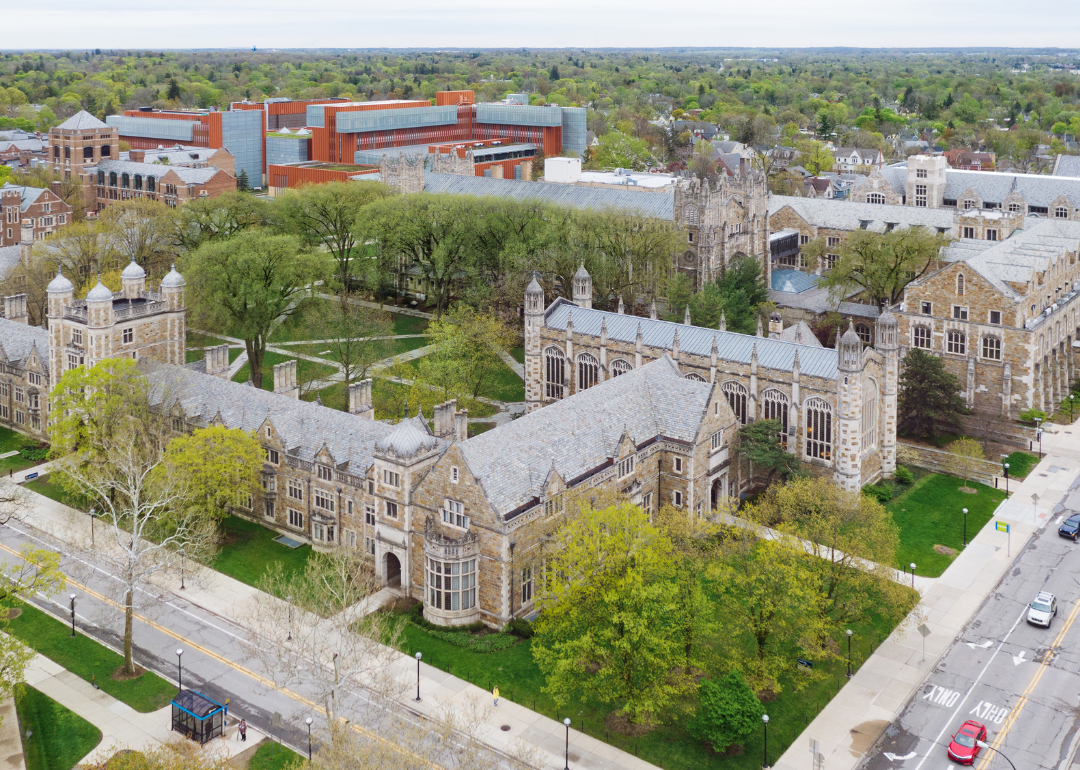
Canva
#4. Michigan
An aerial view of University of Michigan.
– Enrollment change, 2010-2019: -24.7% (172,254 fewer students)
– Enrollment change, 1970-2019: +33.8% (132,785 more students)
– Impact of pandemic, enrollment change 2019-2020: -6.7% (35,430 fewer students)
Michigan has a unique factor affecting its college enrollment numbers—an aging population. With one-quarter of its counties seeing a median age of 50 or older, there are frankly just fewer people looking to enroll in a higher education institution. So the state has focused on creating more scholarship programs, including one focused on funding the education of returning students and bolstering its economy in other ways.
The main focus, at the moment, is creating a state that attracts new and growing businesses, which in turn is expected to show prospective students that there will be ample job opportunities in the region upon graduation from schools like Michigan State and the University of Michigan.
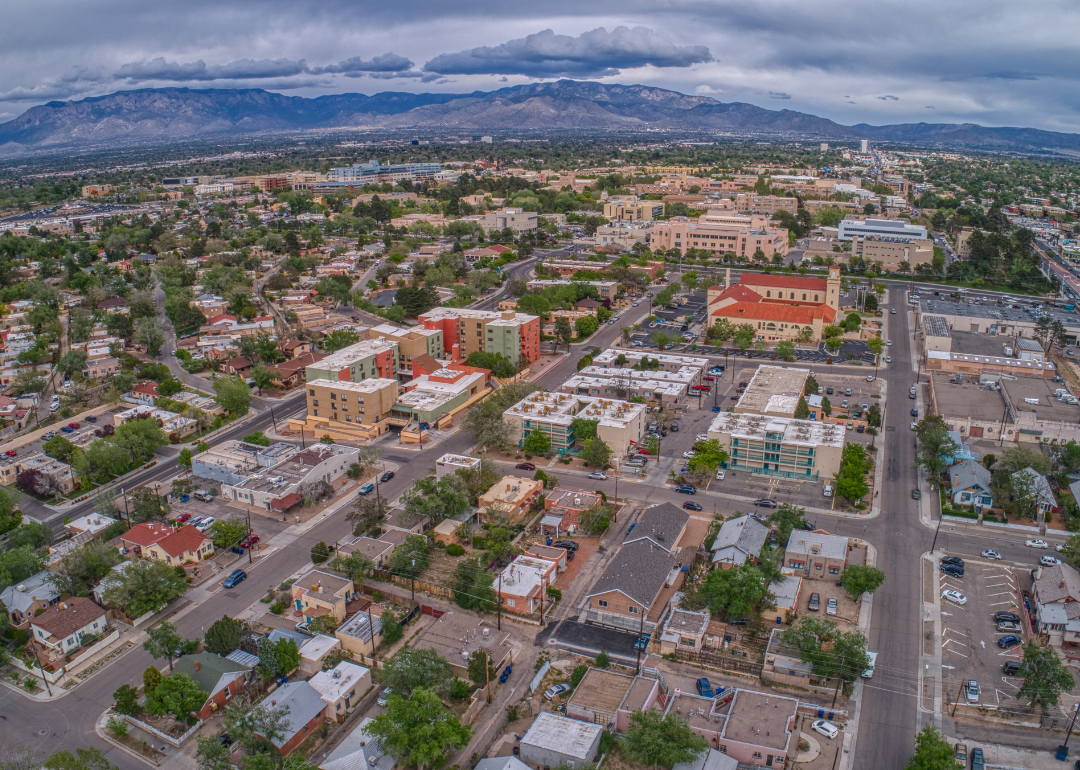
Canva
#3. New Mexico
An aerial view of University of New Mexico.
– Enrollment change, 2010-2019: -25.1% (40,841 fewer students)
– Enrollment change, 1970-2019: +173.7% (77,250 more students)
– Impact of pandemic, enrollment change 2019-2020: -9.5% (11,616 fewer students)
New Mexico may have seen a 25% drop in college enrollment between 2010 and 2019, but it seems the state may finally be stemming that tide. In a March 2023 press release from the governor’s office, it was revealed that the area’s public colleges and universities—including the University of New Mexico and New Mexico State—have seen a 6% increase in enrollment. This jump has largely been attributed to the Opportunity Scholarship, a new program that covers up to 100% of tuition for eligible residents. The initiative may be a costly one, but should be a worthwhile investment if it helps shore up the shrinking workforce the state has also been struggling with.
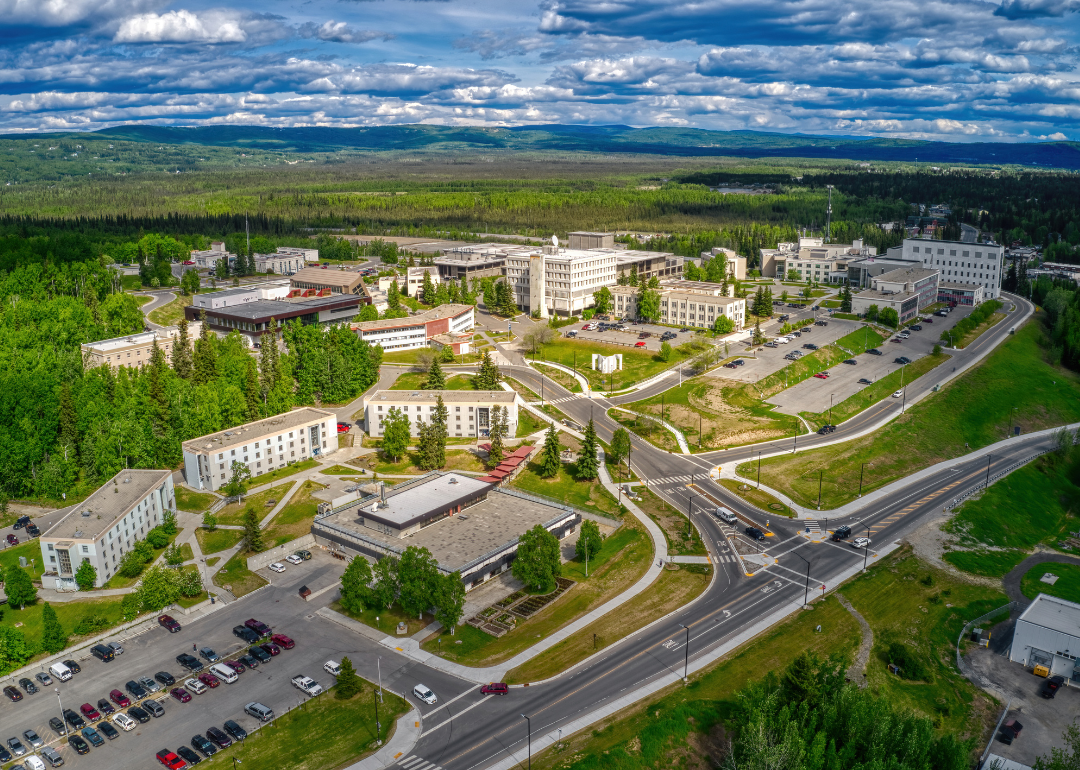
Canva
#2. Alaska
An aerial view of the state university in Fairbanks, Alaska.
– Enrollment change, 2010-2019: -32.9% (11,446 fewer students)
– Enrollment change, 1970-2019: +146.6% (13,882 more students)
– Impact of pandemic, enrollment change 2019-2020: -5.3% (1,247 fewer students)
Over the last decade, the University of Alaska system has been battling a whole host of challenges that affect its enrollment numbers. First, the school was forced to cut a host of education programs, including its bachelor’s in Elementary Education, after it lost accreditation for those particular courses of study. Then, the governor cut $130 million from the school’s budget, and thousands of students learned the funding for scholarships and grants they’d been awarded was unavailable. All of this change has made many wary of the institution, unsure of whether it will survive, and therefore unwilling to enroll.
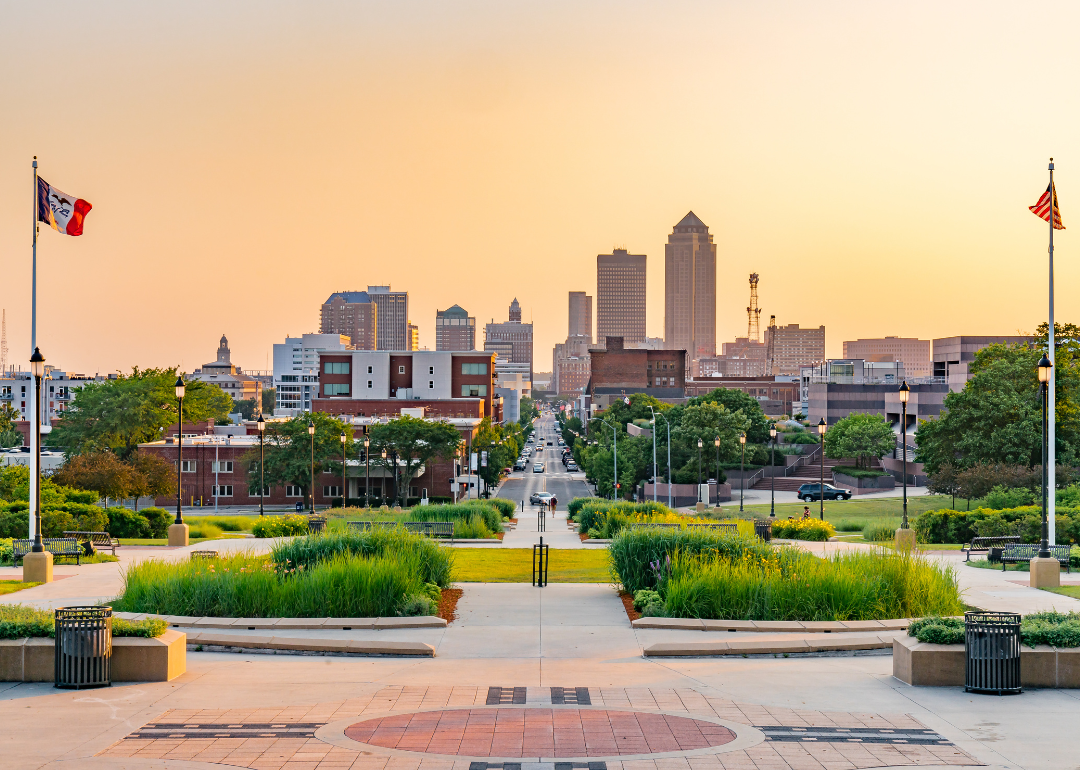
Canva
#1. Iowa
The Des Moines, Iowa skyline.
– Enrollment change, 2010-2019: -42.9% (163,834 fewer students)
– Enrollment change, 1970-2019: +100.2% (109,131 more students)
– Impact of pandemic, enrollment change 2019-2020: -4.5% (9,813 fewer students)
Like Arizona, Iowa’s schools largely attract out-of-state students over in-state students. And while that’s not necessarily a negative—it means an aging population problem like Michigan’s is less of an issue—it does mean they’re more susceptible to outside factors, like a global pandemic and rising tuition costs. The University of Iowa and Iowa State have therefore reprioritized by focusing on bringing in more homegrown learners than ever before—and it just might work. While their overall enrollment numbers are still down, schools in this state are seeing more diversity than ever before, which could be a sign that the declines could eventually be reversed.
Data reporting by Emma Rubin. Story editing by Jeff Inglis. Copy editing by Tim Bruns. Photo selection by Lacy Kerrick.
This story originally appeared on EDsmart and was produced and
distributed in partnership with Stacker Studio.